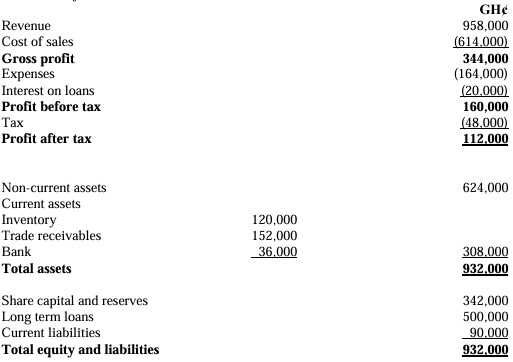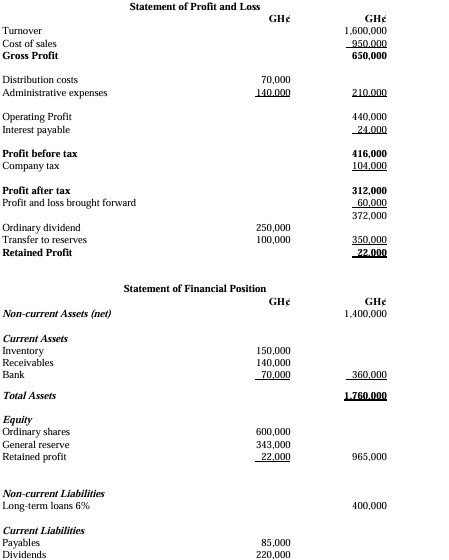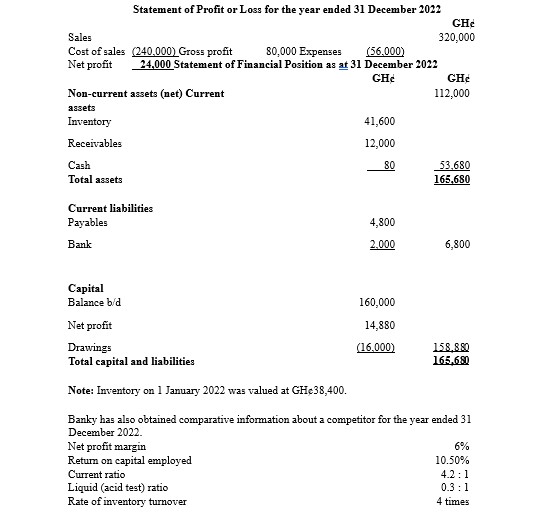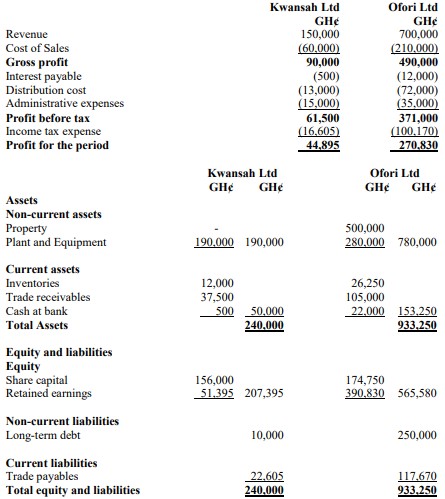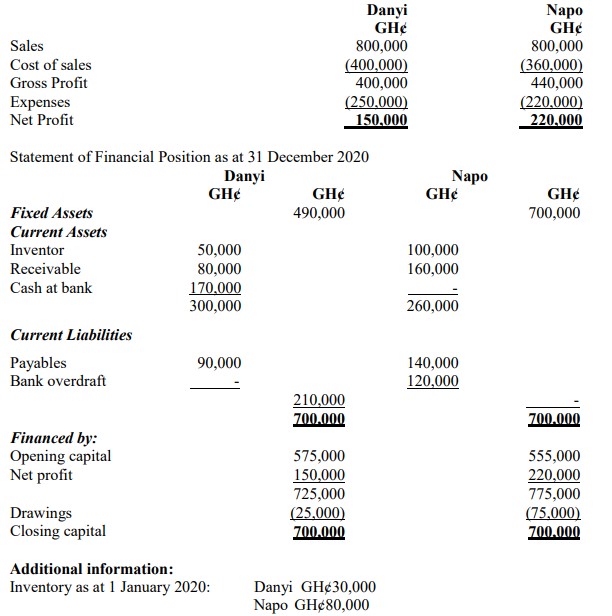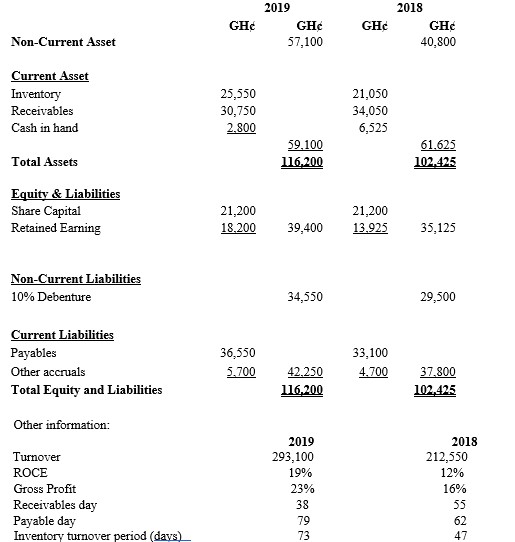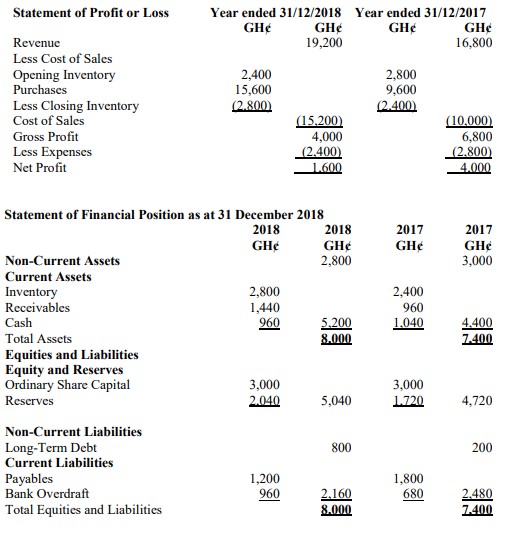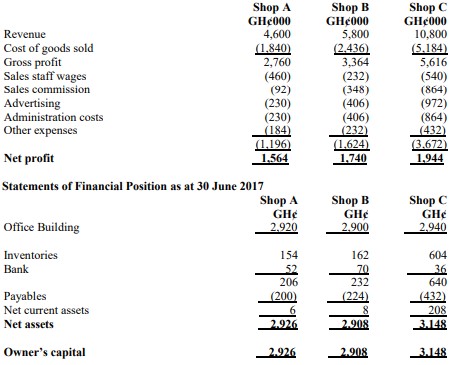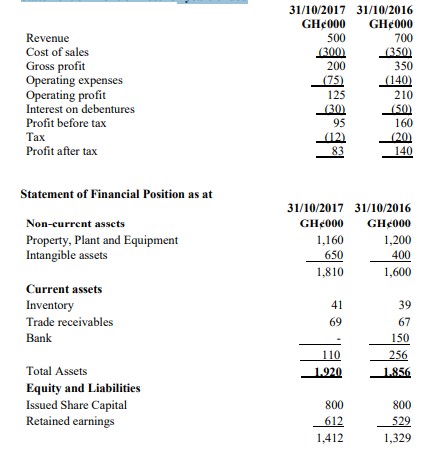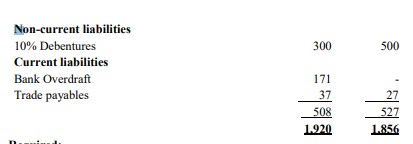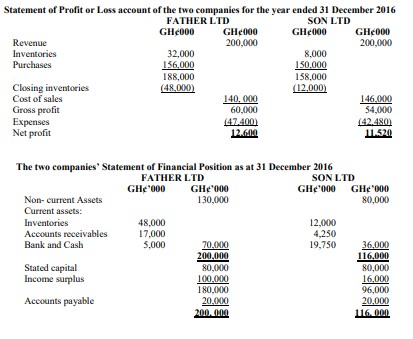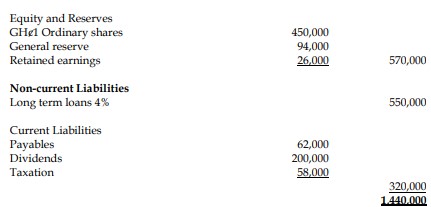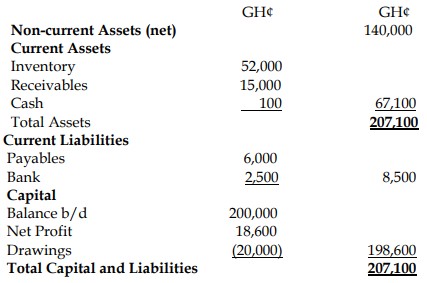Below is the formatting of Question 5 from the uploaded document as per your request:
==========
Level:
Level 1
Professional Bodies:
ICAG
Programs:
Professional Program
Subjects:
Financial Accounting (Paper 1.1)
Topics:
- Interpretation of financial statements (Financial Ratios)
Series:
Dec 2023
Total Marks:
20
Question Tags:
Financial Ratios, Performance Analysis, Profitability, Liquidity, Efficiency
Question Short Summary:
Calculates and interprets financial ratios to assess the performance of a company over two years.
Question:
a) The following summarised information has been extracted from the accounts of Kotoku Ltd for the years ended 31 December 2021 and 31 December 2020:
| Statements of Profit and Loss |
2021 (GHȼ’000) |
2020 (GHȼ’000) |
| Revenue |
1,150 |
1,766 |
| Cost of sales |
(684) |
(1,141) |
| Gross profit |
466 |
625 |
| Expenses |
(338) |
(472) |
| Interest on loans |
(26) |
(33) |
| Profit before tax |
102 |
120 |
| Tax |
30 |
36 |
| Profit after tax |
72 |
84 |
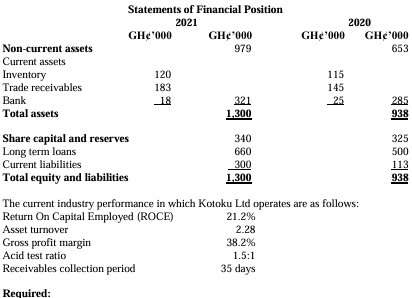
Calculate the following ratios for Kotoku Ltd for both years (2020 and 2021):
i) Return On Capital Employed (ROCE) (2 marks)
ii) Asset turnover (2 marks)
iii) Gross profit margin (2 marks)
iv) Acid test ratio (2 marks)
v) Receivables collection period (2 marks)
b) Using the additional information given and the ratios you calculated in part (a), comment on the financial performance of Kotoku Ltd. (10 marks)

